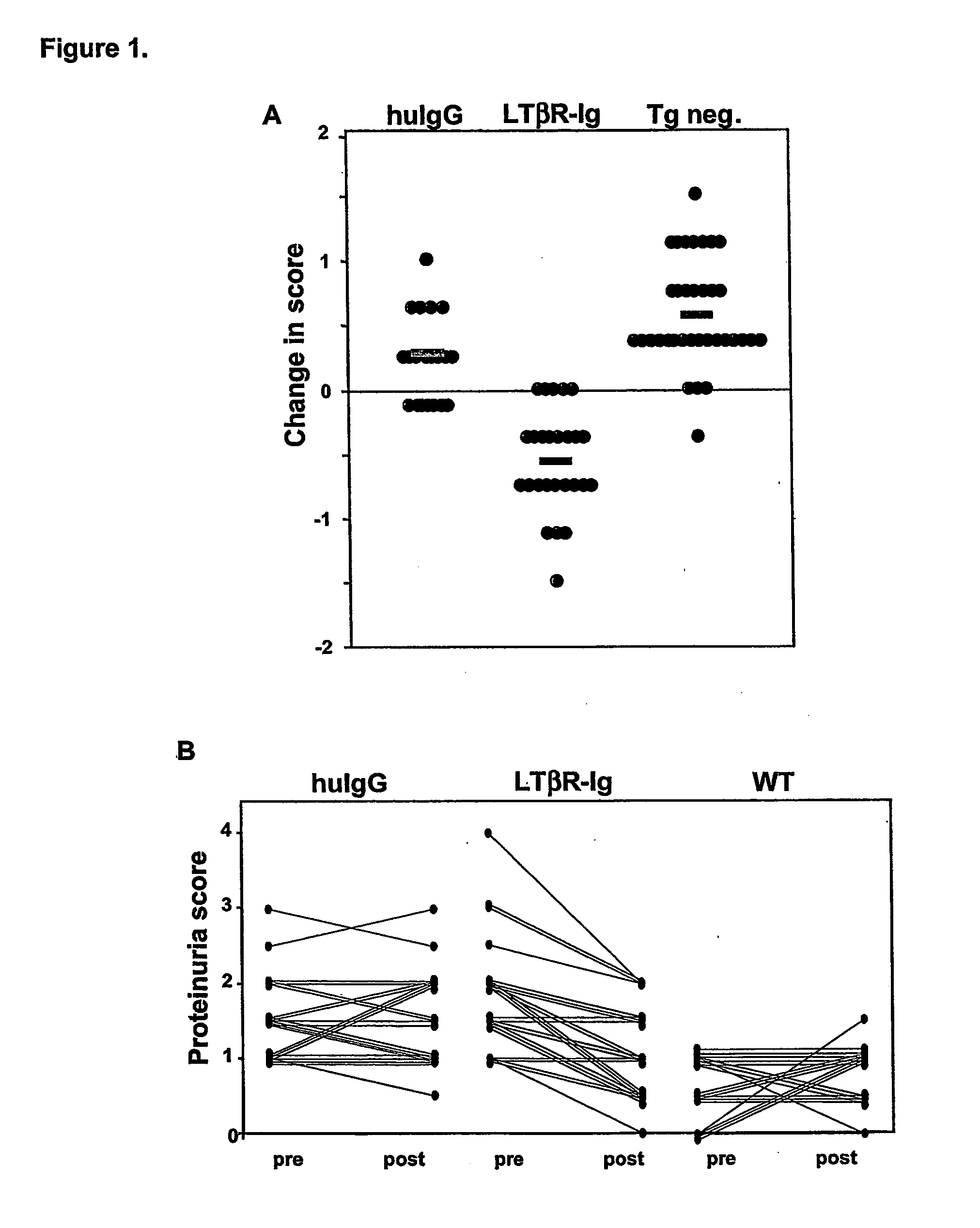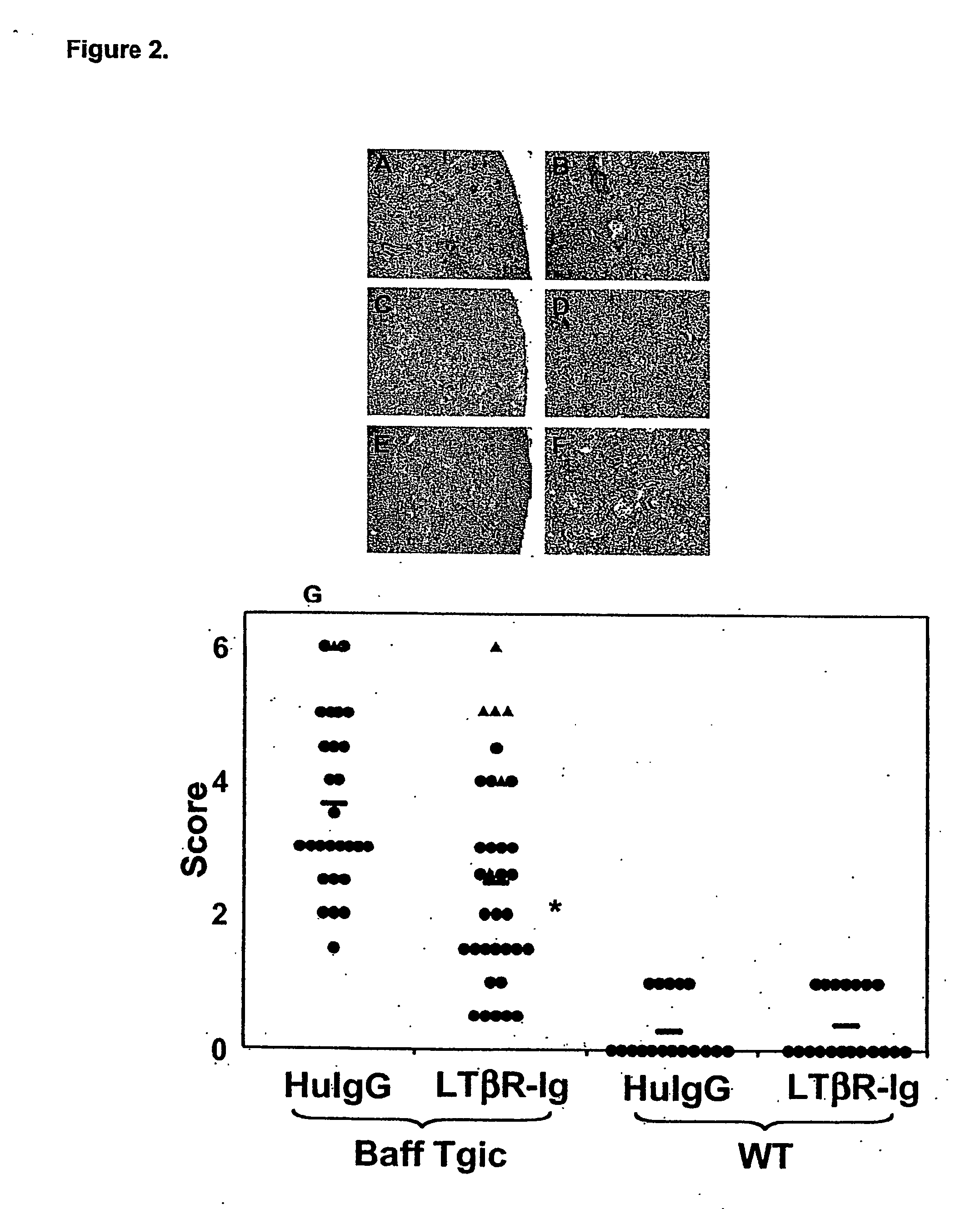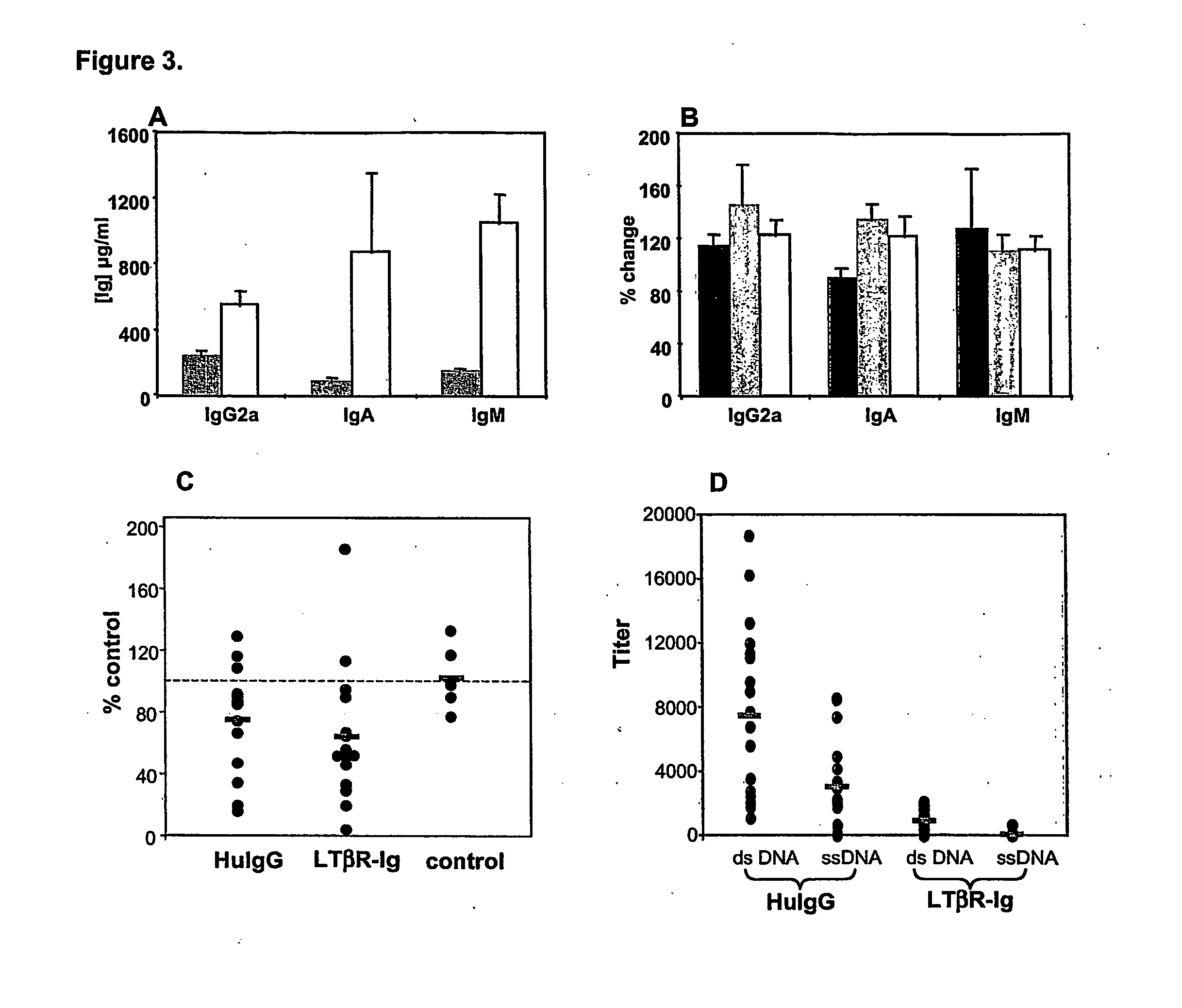Treatment of immunological renal disorders by lymphotoxin pathway inhibitors
a lymphotoxin pathway inhibitor and immunological kidney technology, applied in immunological disorders, metabolism disorders, antibody medical ingredients, etc., can solve the problems of renal failure, inability to effectively treat these diseases, and inability to achieve effective treatmen
- Summary
- Abstract
- Description
- Claims
- Application Information
AI Technical Summary
Benefits of technology
Problems solved by technology
Method used
Image
Examples
example 1
LTBR-Ig Treatment Ameliorates Kidney Function
[0082] BAFF-transgenic (Tg) mice expressing full-length murine BAFF under the control of liver-specific regulatory sequences were generated as previously described Mackay et al. (1999) J. Exp. Med. 190:1697). All mice used were generated through ongoing colony expansion by back-crossing Tg males to C57BL / 6 females. Transgenic status was determined by performing PCR on DNA collected from tail tips. BAFF-transgenic mice begin to develop a lupus-like syndrome at 6 months of age and older as assessed by scoring protein levels in the urine.
[0083] In order to evaluate whether LTBR-Ig would be effective in treating BAFF-transgenic mice, animals that were 6 months of age or older exhibiting proteinuria (PU) scores of 1+ / 2+ or higher were selected for enrollment in a 5-week treatment regime. BAFF Tg mice and nontransgenic (Tg neg.) littermate controls received intraperitoneal (i.p.) injections of 100 μg LTBR-Ig or 100 μg of human IgG (huIgG) (Sa...
example 2
LTBR-IG Treatment Ameliorates Kidney Glomerular Damage
[0086] Kidney dysfunction as assessed by proteinuria accompanies aspects of kidney pathology. In nephritic kidneys, several pathologies may be apparent. Glomemli are seen as enlarged and hypercellular, and collagen deposits within the glomeruli can be apparent In addition, infiltrates are often observed around glomeruli and in more severely nephritic cases, proteinaceous casts can be discerned.
[0087] BAFF-Tg mice and nontransgenic (Tg neg.) controls were treated as with LTBR-Ig or huIgG as described in Example 1. Using periodic acid-Schiff (PAS) staining to evaluate collagen deposits, kidneys from 4 separate studies were evaluated.
[0088] A statistically significant (P<0.002) decrease in kidney pathology was observed with LTBR-Ig treatment as compared to the huIgG control animals (FIG. 2G). The range of pathology from animal to animal was significant, and LTBR-Ig treatment did not prevent pathology in every animal. Representati...
example 3
LTBR-Ig Treatment Decreases Auto-Antibody Titers
[0089] Serum Ig levels in BAFF-Tg mice have been shown to be elevated compared to non-transgenic littermates. As shown in FIG. 3A, using BAFF-Tg mice, a marked increase in both IgM (7.3 fold) and IgA (10.6 fold) titers, and a moderate increase in IgG2a titers (2.4 fold). Total IgG titers were increased by only 1.2 fold were found.
[0090] To determine if inhibition of the LT pathway in a hyper-IgA mouse would have an effect on overall IgA levels. Examination of auto-antibody titers was performed in BAFF-transgenic mice. LTBR-Ig treatment over 5 weeks did not have any impact on any Ig isotype, including IgA (FIGS. 3B and 3C). Only approximately 30% of BAFF-transgenics had evidence of anti-DNA titers, and these were very weak. Anti-chromatin titers were more reliably present in serum of transgenic mice. Treatment with LTBR-Ig resulted in a 36% decrease in anti-chromatin titers over the 5 week treatment period. However, IgG-treated transg...
PUM
| Property | Measurement | Unit |
|---|---|---|
| Fraction | aaaaa | aaaaa |
| Solubility (ppm) | aaaaa | aaaaa |
| Solubility (ppm) | aaaaa | aaaaa |
Abstract
Description
Claims
Application Information
 Login to View More
Login to View More - R&D
- Intellectual Property
- Life Sciences
- Materials
- Tech Scout
- Unparalleled Data Quality
- Higher Quality Content
- 60% Fewer Hallucinations
Browse by: Latest US Patents, China's latest patents, Technical Efficacy Thesaurus, Application Domain, Technology Topic, Popular Technical Reports.
© 2025 PatSnap. All rights reserved.Legal|Privacy policy|Modern Slavery Act Transparency Statement|Sitemap|About US| Contact US: help@patsnap.com



